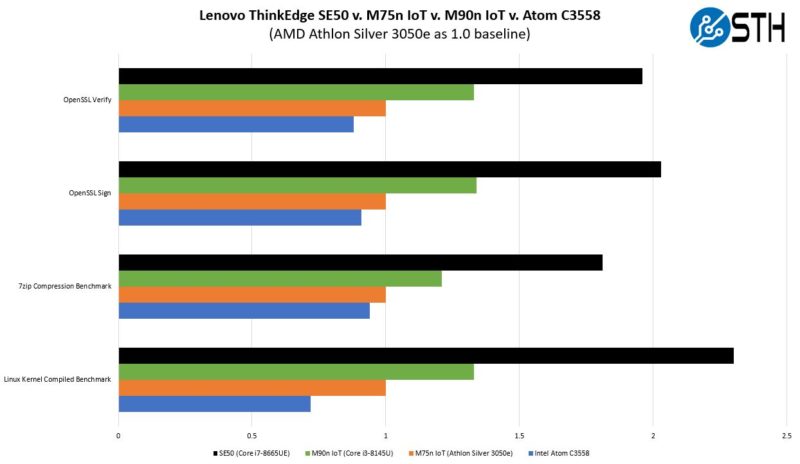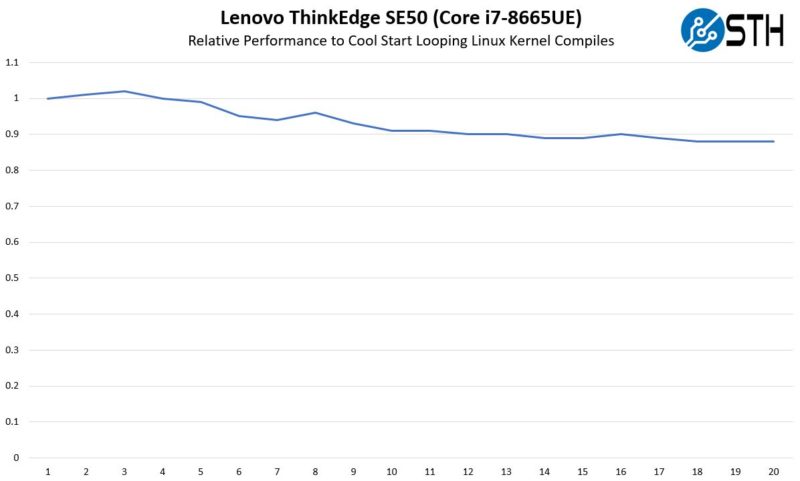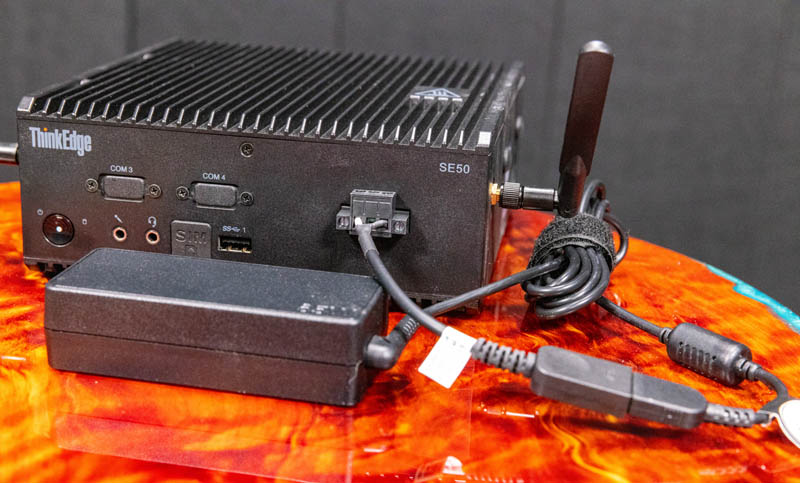Lenovo ThinkEdge SE50 Performance
Lenovo has both Core i5 and Core i7-based solutions. Our review unit had the Intel Core i7-8665UE processor which is the higher-end option. We then wanted to just show a quick comparison of this system versus the other two Lenovo IoT and passively cooled units that we have looked at as well as an Atom C3558, a common edge CPU for networking and embedded platforms. We used the Lenovo M75n-IoT as the baseline:

Overall, the performance was excellent and clearly beyond the other options we have looked at. At the same time, we do have to note that this is a significantly larger system with more expandability so that also makes sense.
What we wanted to do, however, was to test how well the system would handle the continuous load. That is a big deal in passively cooled systems.

Overall, we lost around 10%-11% performance from the heat soak. We will quickly note that this is a fairly high load compared to what these boxes normally experience. It is unlikely one is going to peg the system performance like this 24×7. Still, it is important to note that the SE50 loses some performance over time. This was done at 23.3C / 74F so higher or lower temperatures may have an impact as well.
Power Consumption
Again, we were using the 65W Lenovo power adapter plus another adapter to get 3-pin power input with this unit. There are clearly other options and that will have an impact on power consumption. We still wanted to share what we found in terms of power consumption.

In our test system, we saw 9-11W at idle. Without heavy NIC activity and for medium workloads that we would expect on a system like this we were closer to 25W. There is some room for this to grow, as well as other options for CPUs, drives, radios, and so forth. Still, this is a bit surprising with how little power consumption we saw.
In the industrial IoT market, low power consumption is important, especially in locations that have very tight power budgets because they are running off of solar panels or have other power constraints.
Final Words
Overall, this was a very interesting solution. Having six NICs, an Intel Core 8th gen processor, and WiFi in a passively cooled machine that can be purchased and supported by Lenovo is certainly intriguing. There are also a ton of customization options that we did not get to test. The size was clearly much larger than the m90n-IoT and m75n-IoT, but at least Lenovo made up for the additional volume with additional features. Having the ability to add CAN connections or change NICs using PCIe cards is certainly something beyond what the other units we looked at from Lenovo can offer.




1G is common also because fiber can’t handle dust as well
So what would be a good use for this thing in the home?
@Seth pfSense comes to mind.
@samir
Ok, I was thinking along the same lines.
Thank you.
6 NICS? So is this like a router? My first thought was ‘is it a switch?’, but switches shouldn’t have NICS (unless L3 switches, of course). . I’m a bit confused what this is for, exactly